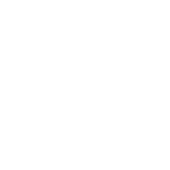 |
 |
 |

|
RItsue Mishima
Credits: Museum Grimani Palace
|
|
 |
MUSEUM PALAZZO GRIMANI
-Ritsue Mishima
During the 55th International Art Exhibition in Venice, the glass sculptures of Ritsue Mishima will be exposed. The exhibition was specifically conceived and created for these spaces, which became famous for having displayed the family’s collection of classical sculptures (most of which are now at the Archaeological Museum of Venice), cameos, vases and other antiquities, as well as paintings by some of the greatest masters in Italy and Northern Europe.
|

|
Posted 23 June 2013
|
Share this:
|
|
|
|
|
|
|
|
|
|
Museum Grimani Palace
30/5-29/9
Wednesday May 29th at 5:00 pm, in the spaces on the piano nobile of the Museum of Palazzo Grimani, the Superintendent Giovanna Damiani is inaugurated the exhibition IN GRIMANI. Ritsue Mishima Glass Works, curated by Giulio Manieri Elia and Mishima Studio.
The exhibition will be open from May 30th, during regular museum hours, through September 29th 2013.
With the exhibition IN GRIMANI, the piano nobile of the Museum of Palazzo Grimani will open to contemporary art. The residence of one of the most powerful and distinguished Venetian families, which boasts some of the most important sixteenth-century cycles of frescoes in the city, by Francesco Salviati, Federico Zuccari and Camillo Mantovano, and the elegant white and gilded stuccoes by Giovanni da Udine, will exhibit, during the 55th International Art Exhibition, the glass sculptures of Ritsue Mishima. The exhibition was specifically conceived and created for these spaces, which became famous for having displayed the family’s collection of classical sculptures (most of which are now at the Archaeological Museum of Venice), cameos, vases and other antiquities, as well as paintings by some of the greatest masters in Italy and Northern Europe.
Ritsue Mishima, born in Kyoto and a resident of Venice since 1989, links her personal artistic expression to the thousand-year-old techniques of glassmaking and, as she herself asserts, she could not create anywhere but Venice. Using exclusively transparent material, which not only does not interrupt the flow of light, but gathers within it and encompasses all the other colours, Mishima expresses herself with a contemporary language, by means of the artisanal culture of the glassmasters from Murano who “forge” her ideas. The dialogue between the artist and the glassmaster, engulfed in the heat and clamour of the furnace, is made of secret soundless gestures that the profane are unable to capture. Venice thus offers the Japanese artist not only material and technique, but inspiration as well, which Mishima takes to heart thanks to her remarkable talent, which comes to her from her culture of origin, for capturing the natural element and its constant fluctuation.
The spaces of Palazzo Grimani, on the other hand, are not merely a receptacle, but the very source of evocation and inspiration for the artist, refined in the course of lengthy and assiduous visits to these spaces, in a personal effort to establish an emotional understanding. This experience has led to the creation of 30 large works and 5 installations, conceived specifically to dialogue with the Museum and its extraordinary decorations. One of the latter, enclosed in a large display case designed by the artist, features 38 precious works in a miniature format.
Eight large-format photographs, displayed in a single monographic space, pay tribute to artist Rinko Kawauchi. Born in Shiga and living in Tokyo, the artist relies on her remarkable predisposition to explore the many abrupt changes in the world around us, for her investigation into the making of Ritsue Mishima’s works: through her poetic vision, she offers us an extraordinary opportunity to penetrate into the mysterious metamorphic glassmaking process in the furnace.
The exhibition catalogue will be published by Marsilio.
MUSEO PALAZZO GRIMANI
Castello, 4858, 30122 Venice, Italy
+39 041 241 1507
www.palazzogrimani.org
|
|
|
|
|
|
|


